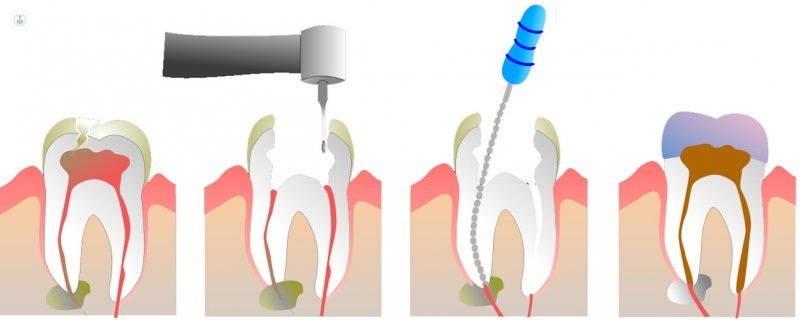What the patient needs to know about endodontics
Written by:Endodontics is a treatment of Dentistry consisting devitalization of the tooth. The vitality of the tooth gives what is called pulp, which is located inside. When it becomes inflamed, pulpitis, which can be reversible or irreversible occurs.
The reversible pulpitis, as its name suggests, usually subsides when we eliminate the causal agent that produces it (a cavity, an abnormal contact of the workpiece against the antagonist ...). The pain is manifested only when the part is in contact with the causative agent; once the causative agent refers, the pain disappears.
Irreversible pulpitis manifests as a continuous or spontaneous pain. This type of acute pulpitis are very painful. Treatment for this type of pulpitis would endodontics (deadness of the piece).
It can also happen that the part is necrotic and not have any pain or tenderness. This means that the injury is already chronic; still that piece should be treated as it is infected, and is also the root canal treatment.
Endodontics: Understanding
The treatment is to remove all infectious material inside the piece. a number of files of different lengths and widths to remove all infected material well inside the roots are passed. Inside is irrigated with a liquid disinfectant and dried. Finally, inside the roots with a biocompatible material is sealed and finally the final sealing is performed. Depending on the case, there will be times that the treatment will be completed in one session or two sessions will be needed.
Once completed the treatment, the infection will disappear over time. Normally, the parts that have undergone this treatment are with very little tooth support, in addition to the treatment itself weakens the piece itself; so it is vital that after verifying the remission of the infection, it will place a crown.
In other cases, where the destruction of the tooth is higher, it is necessary to place bolts or studs inside the tooth to provide support and stability to the crown that will go on the tooth.
After endodontic treatment is normal for the patient to experience:
- Annoying chewing and swelling in the area due to mechanical manipulation of the surrounding tissues
- Slight discomfort in the jaw joints
- Difficulty opening the mouth
It is important that the patient follow these tips after treatment:
- Manteneruna proper hygiene, since the root canal does not prevent cavities and periodontal disease
- avoid overloading
- Follow the periodic reviews indicated but not feel pain
The endodontic tooth may undergo changes in color over time. If so, an internal bleaching or other treatment is recommended.



